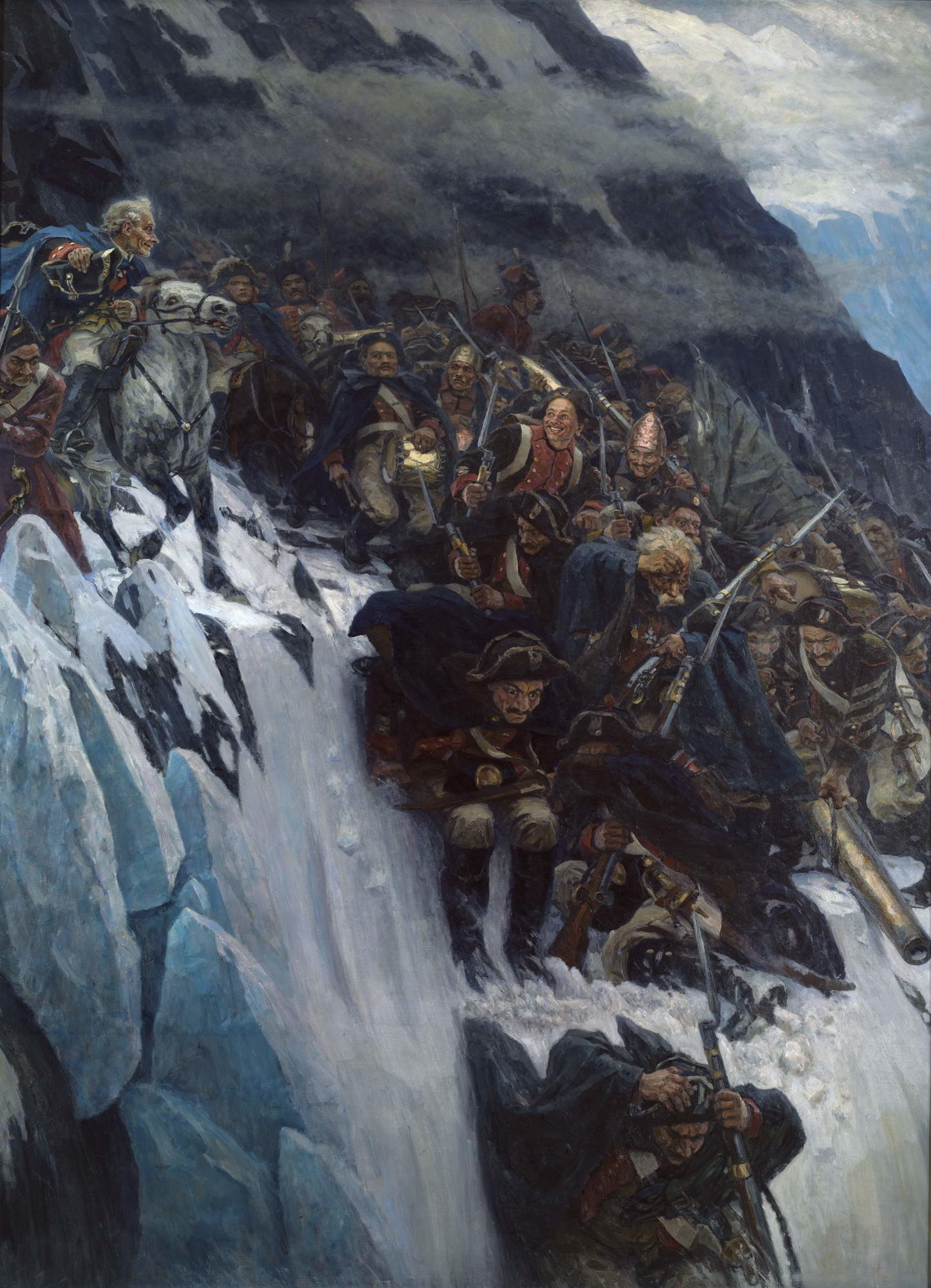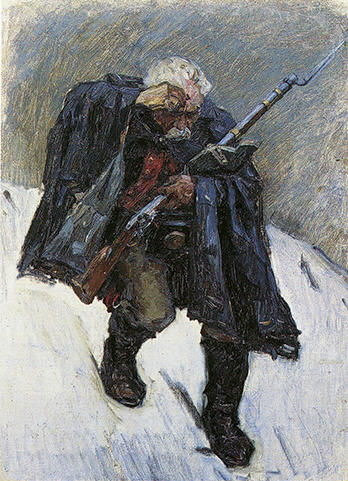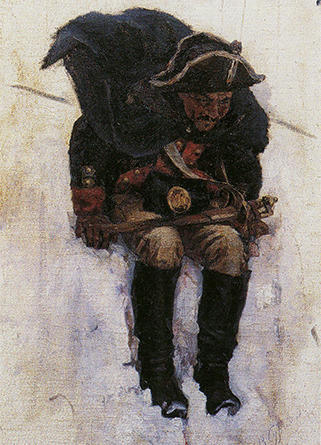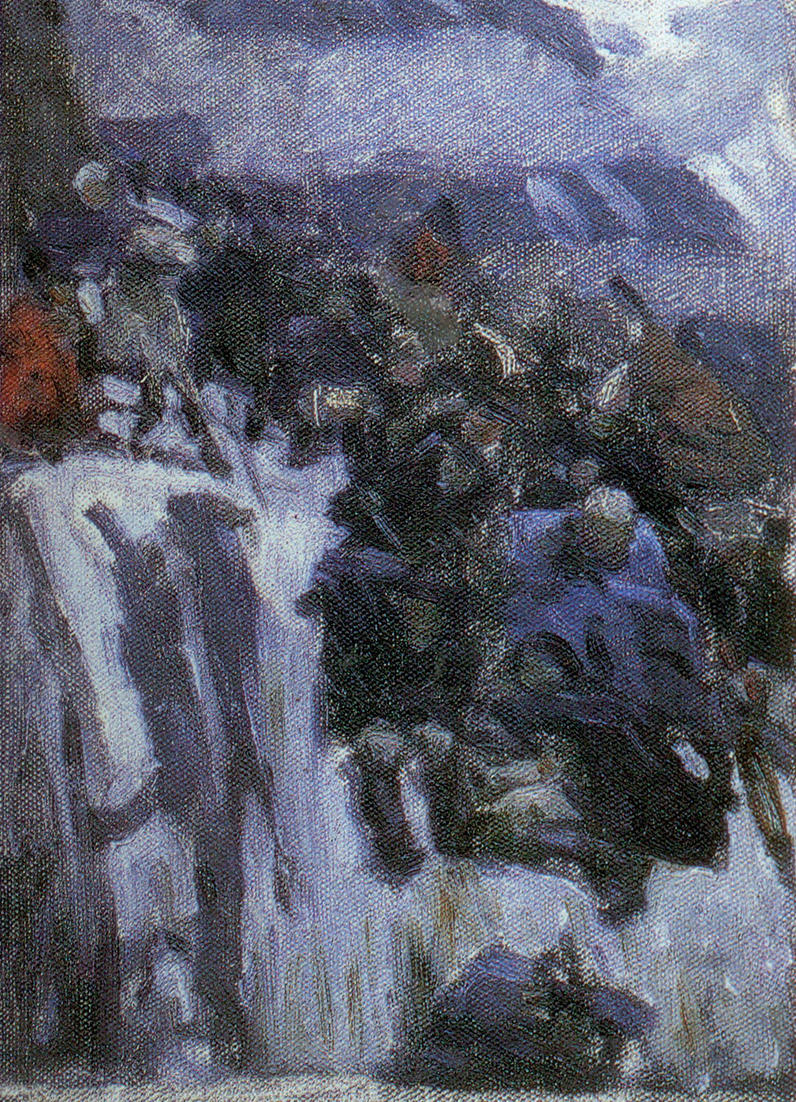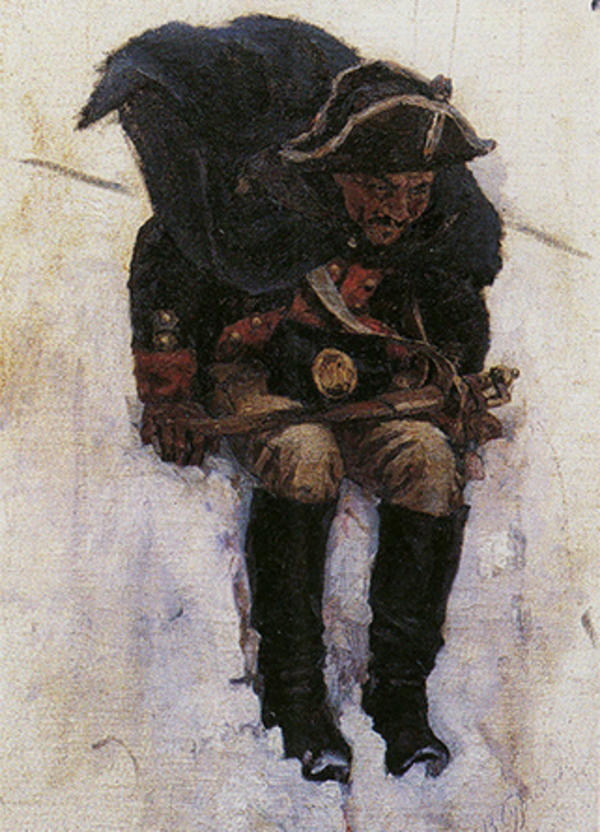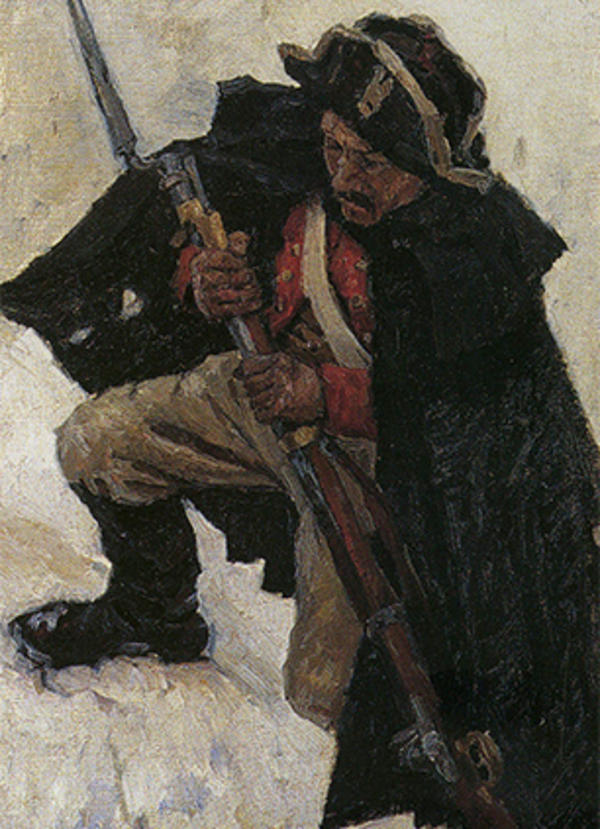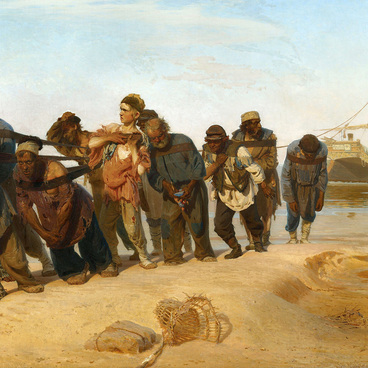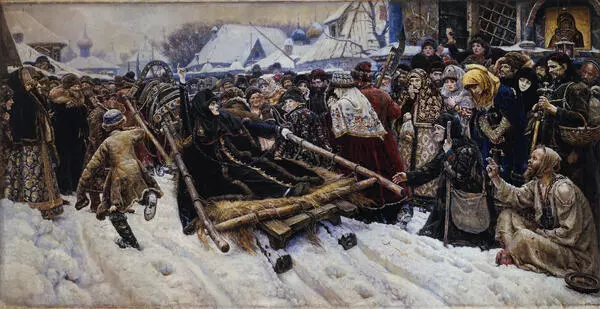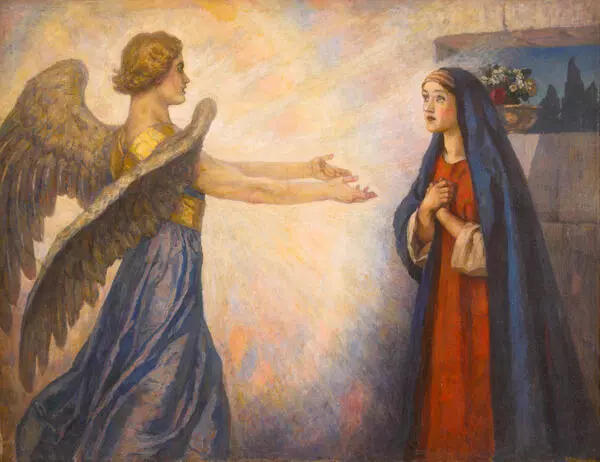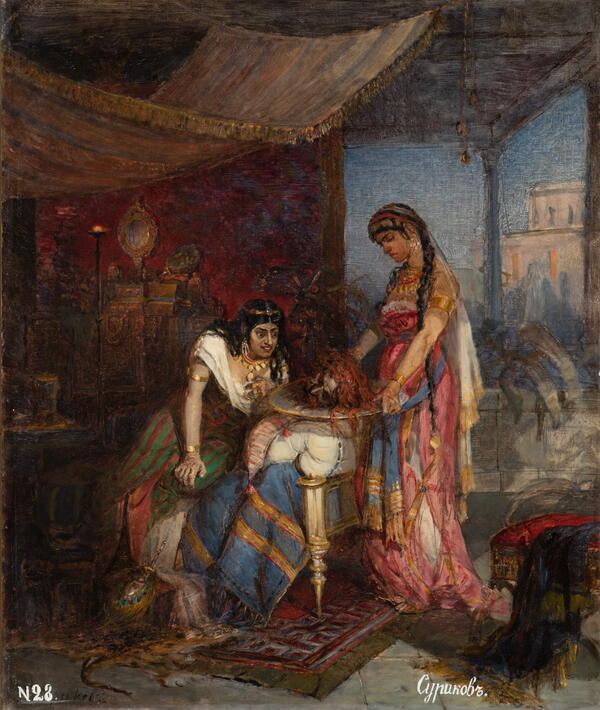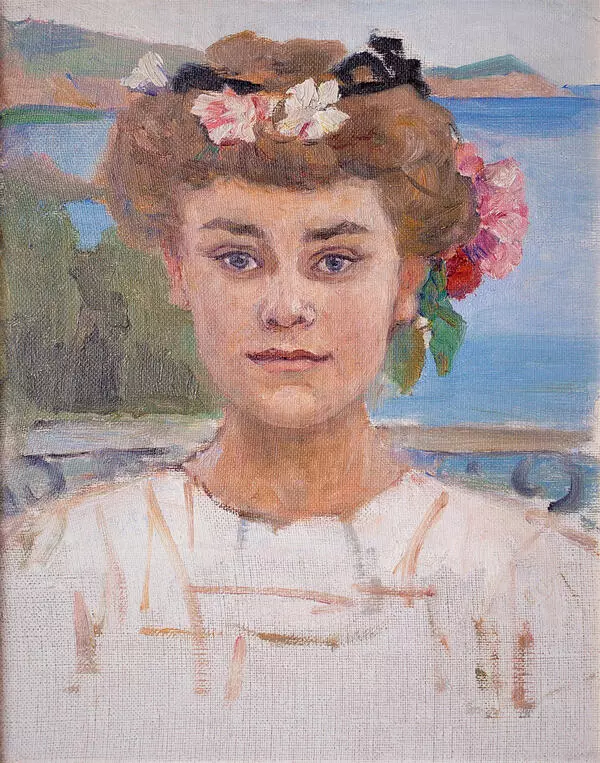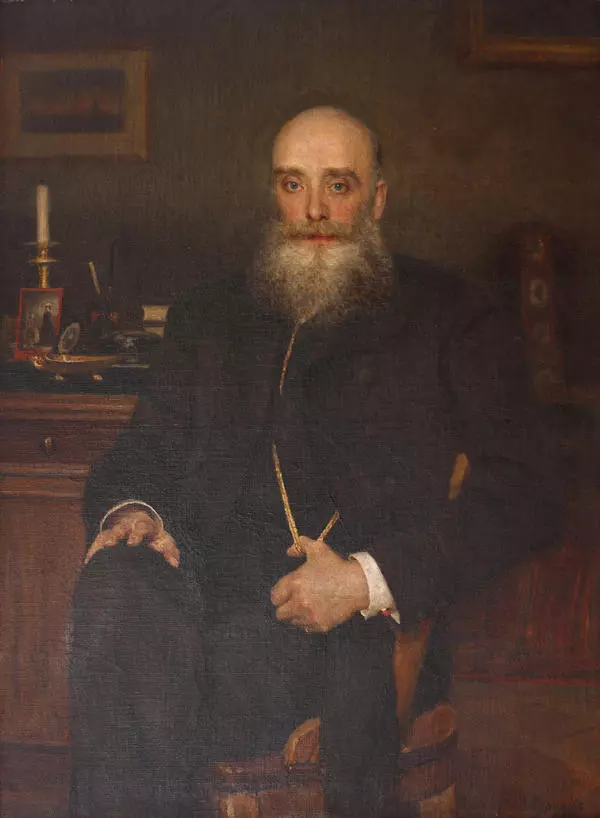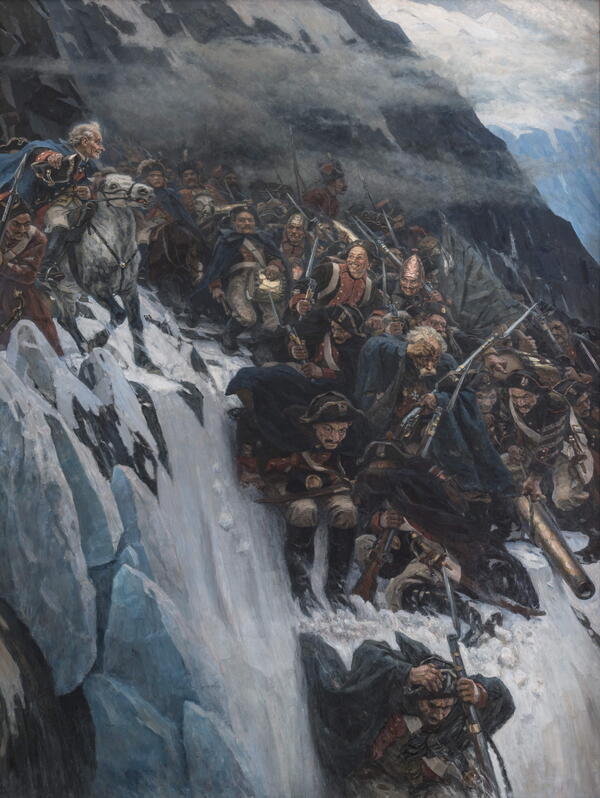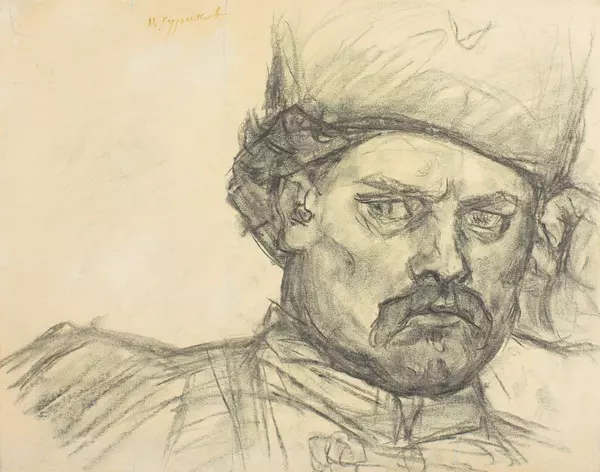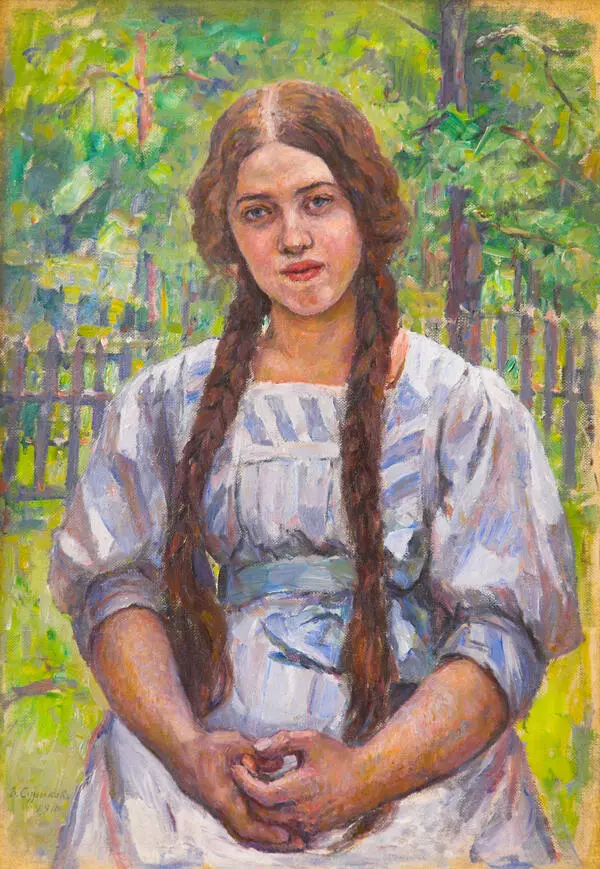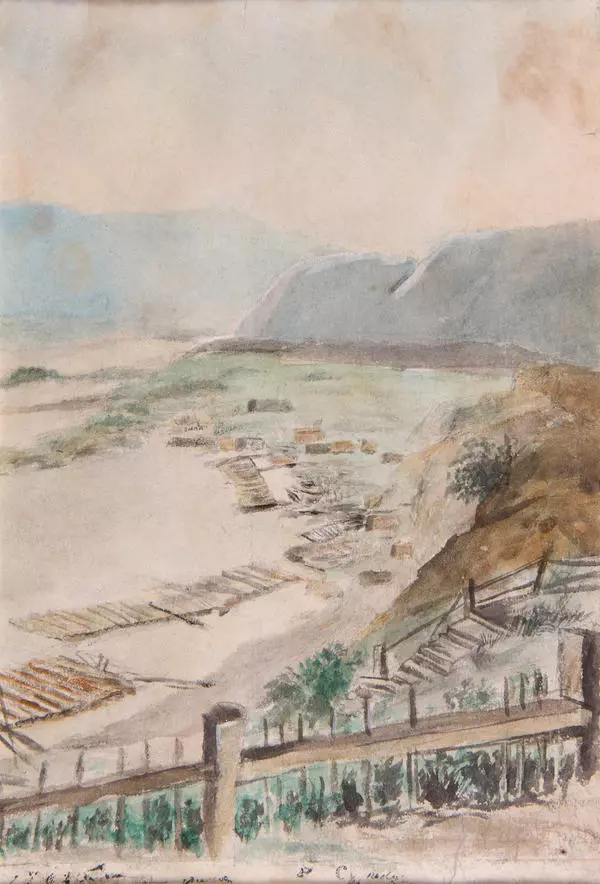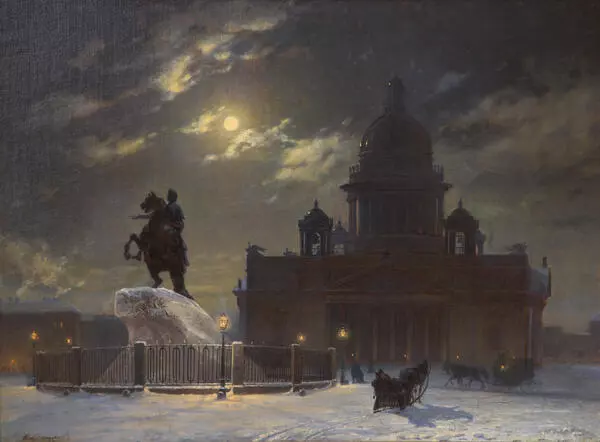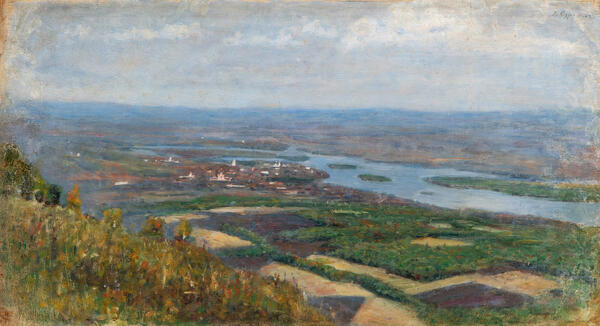Russian troops' crossing the Swiss Alps was unprecedented. No one before or after did it in the winter. However, commander Alexander Suvorov had no other choice: Russia had to fulfill the allied obligations to Austria in the war against France.
1 / 5
Suvorov Crossing the Alps
Creation period
1899
Dimensions
495x373 cm
Technique
Canvas, oil
Collection
Exhibition
86
Open in app#3
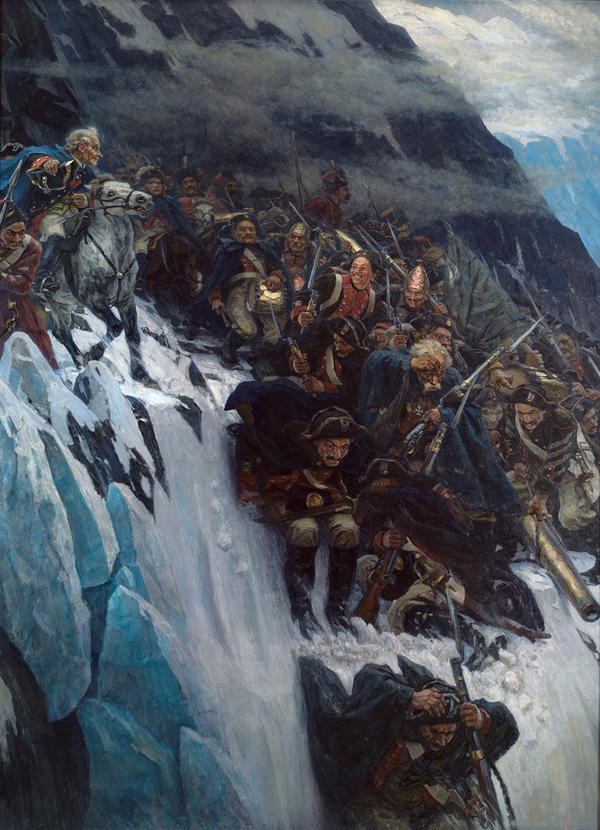
Vasily Surikov
Suvorov Crossing the Alps
#2
#6
Artist Vasily Surikov chose one of the most dramatic moments of the Swiss campaign for his canvas — the descent from the Panix ridge. This pass was the last and most difficult. The army was crossing it for about a day — after several other mountain passes and numerous battles. The military had to throw away supplies and weapons. A lot of soldiers and even more French prisoners died.
#10
However, the painter depicted the Russian army in a single impulse to go forward despite anything. Suvorov was a brilliant commander who did not lose a single battle in his life. He cared for his soldiers, and in their turn, they were ready to follow any call he made.
Vasily Surikov. Old soldier descending the slope of a snowy mountain. Canvas, oil. 1898. Sketch for the painting Suvorov Crossing the Alps. State Russian Museum
#5
In the picture, the artist captured the most diverse emotions of the warriors. Someone is focused on the descent, someone is gloomy and serious, in the back rows anxiety and even fear prevail. The commander on a white horse is calm, he cheers up the army with humor. Surikov himself called his painting a feat for the commander’s joke. In response, two young fighters smile broadly.
#11
Vasily Surikov. A soldier descending from a snowy mountain. Canvas, oil. 1898. Sketch for the painting Suvorov Crossing the Alps. State Russian Museum
The most important thing for the painter was to reveal the moral and psychological state of the participants in the event. He masterfully conveyed the atmosphere thanks to a variety of facial expressions, gestures and postures of people descending on the ice. The picture gives an impression of that inexplicable courage of the Russian army, which has aroused fear in its opponents for centuries.
#12
For these reasons, Surikov neglected some historical details. Vasily Vereshchagin, a battle artist and military expert, judged the author for mistakes. For example, the soldiers could not go down the mountain with bare bayonets, the horse would not come so close to the abyss. But Surikov deliberately avoided realism for the sake of artistic truth, which is higher than the facts of life.
#7
The canvas composition is ingenious for the 19th century pictorial art. Such large-scale works with lots of characters were always oriented horizontally, but the artist turned the canvas to enhance the feeling of this blitz and uncontrollable movement downwards. For the same reason, he cut off the edges, showing only a fragment of the whole action.
Vasily Surikov. A soldier descending from a snowy mountain. Canvas, oil. 1898. Sketch for the painting Suvorov Crossing the Alps. State Russian Museum
#8
Surikov worked on the painting for about four years. He was developing the features of his characters, making sketches of his contemporaries, he went to Switzerland, where he was also making drafts. The artist even crossed some easy Alpine passes himself and tried rolling down the snowy slopes to understand the participants' experience.
#9
Vasily Surikov. Suvorov Crossing the Alps in 1799. Canvas, oil. 1899. Sketch for the painting Suvorov Crossing the Alps. State Russian Museum
In 1899, the artist completed the painting — exactly one hundred years after Suvorov’s Swiss campaign. In the same year, Nicholas II bought it for the recently established Russian Museum.
#13
State Russian Museum
read morehide
00:00
00:00
1x
Suvorov Crossing the Alps
Creation period
1899
Dimensions
495x373 cm
Technique
Canvas, oil
Collection
Exhibition
86
Open in app
Share
